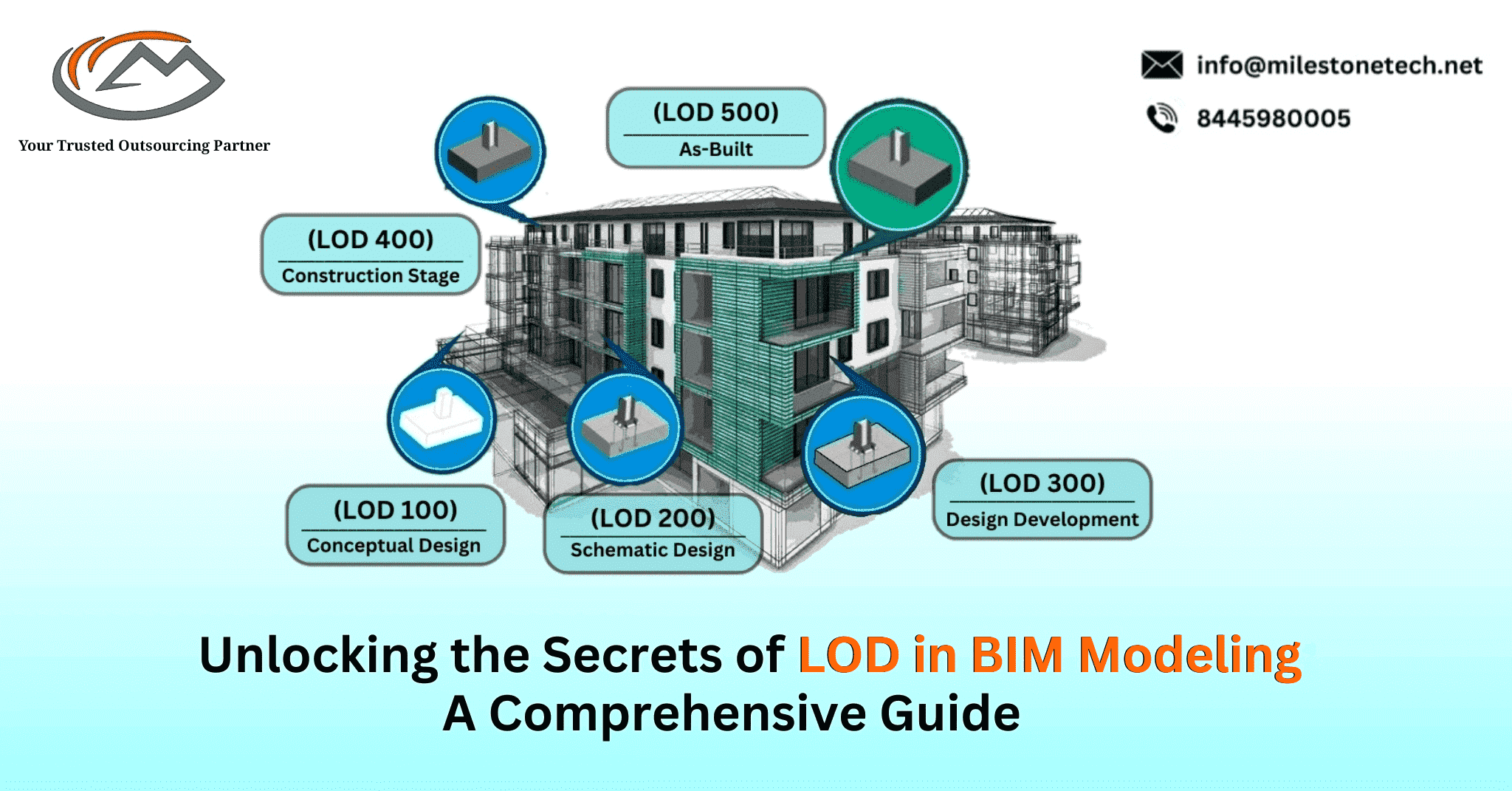Unlocking the Secrets of LOD in BIM Modeling- A Comprehensive Guide

In the ever-evolving world of construction and engineering, precision and clarity are paramount. Enter Building Information Modeling (BIM), a revolutionary approach that transforms the way projects are designed, constructed, and managed. At the heart of BIM lies an essential concept: Level of Development (LOD). In this comprehensive guide, we will unlock the secrets of LOD in BIM modeling, exploring its significance, applications, and how it integrates with tools like Revit Architecture.
Understanding LOD in BIM Modeling
Level of Development (LOD) is a crucial concept in BIM modeling. It defines the level of detail and accuracy of a BIM model at different stages of a project’s life cycle. Essentially, LOD specifies the completeness and reliability of information within the model. LOD is categorized into different levels, typically ranging from LOD 100 (conceptual) to LOD 500 (as-built).
The Significance of LOD in BIM Modeling
LOD serves as a communication tool, ensuring that all stakeholders have a clear understanding of what to expect from the BIM model at various project stages. Here’s why LOD is so significant:
- Clarity and Expectations: LOD eliminates ambiguity by setting clear expectations for the level of detail and information required at each project phase. This helps avoid misunderstandings and reduces rework.
- Collaboration: LOD promotes collaboration among architects, engineers, contractors, and owners. It ensures that everyone is on the same page regarding the model’s content and purpose.
- Cost and Risk Management: By defining the level of detail upfront, project managers can better estimate costs and assess potential risks associated with incomplete or inaccurate information.
Applications of LOD in BIM Modeling
LOD is applied throughout the project lifecycle, from initial planning to construction and facility management. Here are its primary applications:
- Conceptual Design (LOD 100): At the conceptual stage, LOD 100 provides a basic representation of the building’s form and location. It helps stakeholders visualize the project’s overall design.
- Schematic Design (LOD 200): At the conceptual stage, LOD 100 provides a basic representation of the building’s form and location. It helps stakeholders visualize the project’s overall design.
- Design Development (LOD 300): LOD 300 is crucial for detailed design development. It includes precise geometric and spatial information, enabling engineers to validate structural and MEP (Mechanical, Electrical, Plumbing) systems.
- Construction Documentation (LOD 350-400): At this stage, LOD 350-400 offers highly detailed information for construction documentation. Contractors rely on this level of detail for construction planning and execution.
- As-Built (LOD 500): LOD 500 captures as-built conditions after construction is complete. It provides a comprehensive, accurate representation of the finished project for facility management and maintenance.
Integrating LOD with Revit Architecture
Revit Architecture, a powerful BIM software tool, is commonly used for architectural design and documentation. Integrating LOD with Revit enhances its capabilities further. Here’s how:
- Precise Modeling: Revit allows architects and designers to create BIM models with varying levels of detail. By specifying LOD requirements within Revit, users can ensure that their models align with project expectations.
- Information Management: Revit’s data-rich environment makes it an ideal platform for LOD management. Users can attach specific LOD requirements to model elements, ensuring that information is consistently accurate.
- Visualization and Analysis: Revit’s visualization tools enable stakeholders to interact with the BIM model, understanding its contents and implications. This aids in making informed decisions at every project stage.
Conclusion
LOD in BIM modeling is the key to clarity, precision, and effective collaboration in construction and engineering projects. By understanding the significance of LOD and its applications throughout the project lifecycle, teams can streamline processes, reduce errors, and improve project outcomes. When integrated with tools like Revit Architecture, LOD becomes a powerful tool for achieving project success. As the construction industry continues to embrace BIM and LOD, the secrets of efficient project delivery are no longer hidden. They are unlocked through the clear and consistent application of LOD principles, ensuring that every stakeholder, from architects to facility managers, benefits from a comprehensive and accurate BIM model. In the end, LOD in BIM modeling is more than a concept; it’s a game-changer that elevates the quality and efficiency of construction projects, setting new standards for the industry’s future.
Follow Milestone PLM Solutions for AEC Industry Updates, CAD Tips and Global Construction News.
Milestone PLM Solutions with its exclusive delivery center in India is a global CAD, BIM outsourcing partner serving the needs of the AEC industry since 2004. MILESTONE focuses on the unique needs of clients and believe in tackling real-life problems with efficiency, smooth and ease.
The MILESTONE team can assist you with DD Set, CD Set, BIM Modeling, Rendering, walk through and more. We support multiple BIM software including AUTOCAD REVIT, Architecture cad, Vector works etc. Our approach is to provide a dedicated team for each customer over ongoing project and deliver the quality output consistently.
With our state of art technology and large talent pool of Engineers & Architects, we are developing best in class solutions for our customers across the globe. We align with your culture and values to form unbreakable partnerships and are primed for success with over 100 employees and 150 customers in the US, Europe, India, and Asia.
You can email us at info@milestonetech.net and can log in to our website www. milestonetech.net to know more about our services and our work portfolio or contact us on +1-844-598-0005
